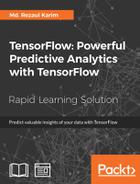Predictive analytics discovers hidden patterns from structured and unstructured data for automated decision making in business intelligence. Predictive decisions are becoming a huge trend worldwide, catering to wide industry sectors by predicting which decisions are more likely to give maximum results. Data mining, statistics, and machine learning allow users to discover predictive intelligence by uncovering patterns and showing the relationship between structured and unstructured data.
Machine learning is concerned with algorithms that transform raw data into information and then into actionable intelligence. This fact makes machine learning well suited to the predictive analytics. Without machine learning, therefore, it would be nearly impossible to keep up with these massive streams of information altogether.
Maps are vital for your journey, especially when you're holidaying in another continent. When it comes to learning, a roadmap helps you in giving a definitive path for progressing towards the goal. So, here you're presented with a roadmap before you begin your journey.
This book is meticulously designed and developed in order to empower you with all the right and relevant information on TensorFlow. We've created this Learning Path for you that consists of four lessons:
Lesson 1, From Data to Decisions – Getting Started with TensorFlow, provides a detailed description of the main TensorFlow features in a real-life problem, followed by detailed discussions about TensorFlow installation and configuration. It then covers computation graphs, data, and programming models before getting started with TensorFlow. The last part of the lesson contains an example of implementing linear regression model for predictive analytics.
Lesson 2, Putting Data in Place – Supervised Learning for Predictive Analytics, covers some TensorFlow-based supervised learning techniques from a theoretical and practical perspective. In particular, the linear regression model for regression analysis will be covered on a real dataset. It then shows how you could solve the Titanic survival problem using logistic regression, random forests, and SVMs for predictive analytics.
Lesson 3, Clustering Your Data – Unsupervised Learning for Predictive Analytics, digs deeper into predictive analytics and finds out how you can take advantage of it to cluster records belonging to the certain group or class for a dataset of unsupervised observations. It will then provide some practical examples of unsupervised learning. Particularly, clustering techniques using TensorFlow will be discussed with some hands-on examples.
Lesson 4, Using Reinforcement Learning for Predictive Analytics, talks about designing machine learning systems driven by criticism and rewards. It will show several examples on how to apply reinforcement learning algorithms for developing predictive models on real-life datasets.
